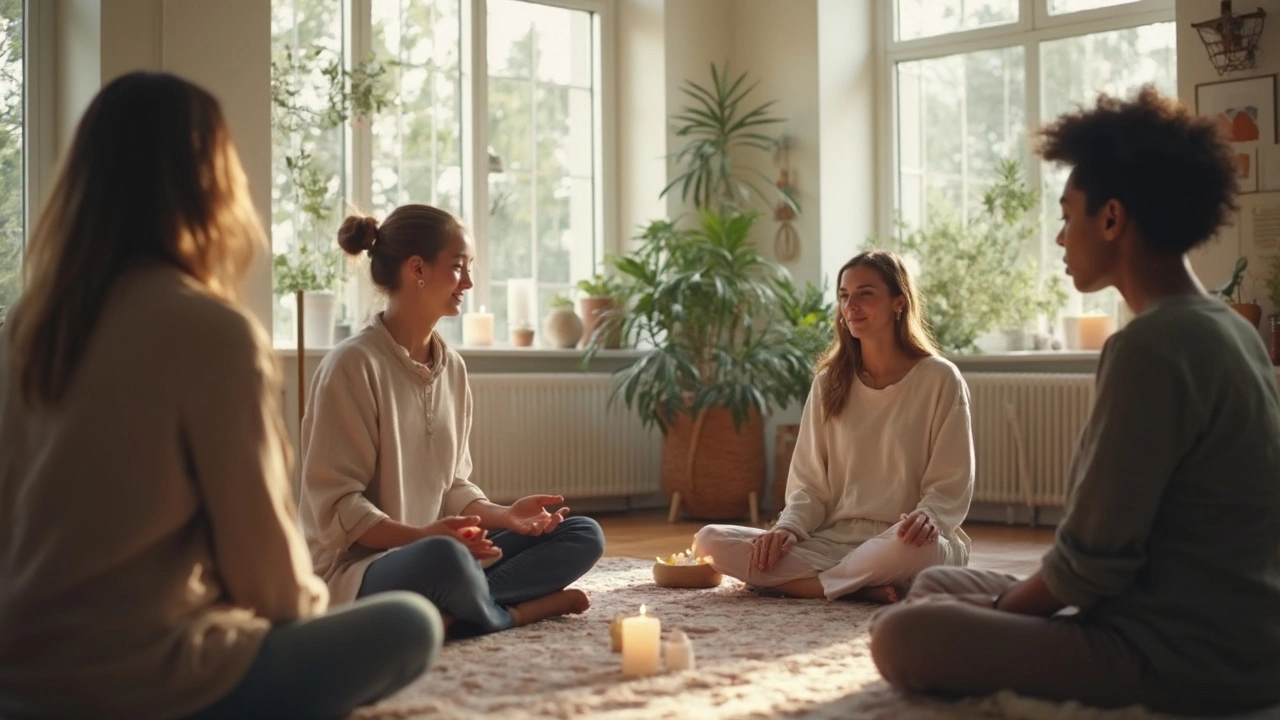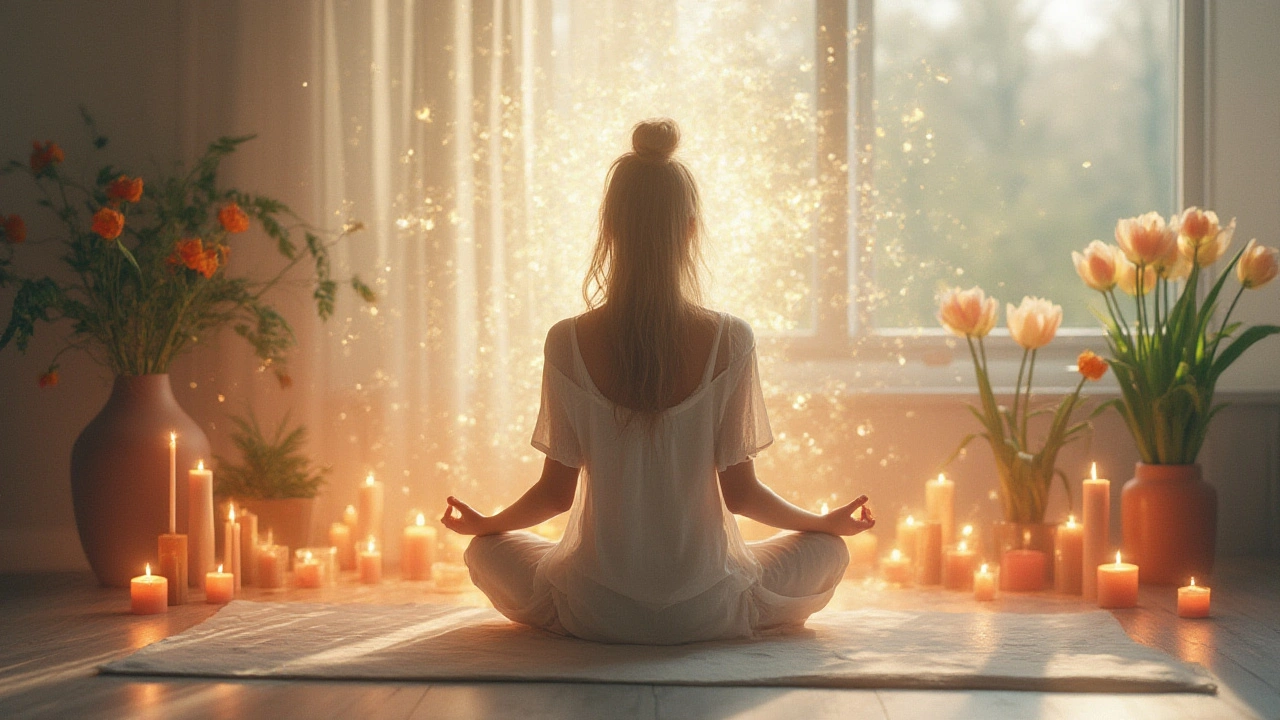Tantra in Modern Spirituality: What You Need to Know

Modern spirituality isn’t just about meditation apps or vision boards. More people are now turning to tantra, but most aren’t sure what it actually involves—or if it’s even right for them. If you think tantra is just about sex, that’s missing the bigger picture. Today, tantra covers everything from mindfulness to building genuine connections (with yourself and others), and even handling stress better.
If you’re tired of cookie-cutter wellness advice that never seems to stick, understanding tantra might just shake things up for you. It doesn’t matter if you’re totally new to spiritual practices or you’ve been around the block. This isn’t about wearing robes or chanting for hours—most people use simple, practical techniques that work with daily life. Ready to see what all the buzz is about and whether it could fit into your own routine? Let’s clear up the confusion and help you decide if this path makes sense for you.
- Key Takeaways
- Direct Answer: Tantra’s Role in Modern Spirituality
- What Is Tantra and Why Does It Matter Today?
- Tangible Benefits of Tantra Practice
- Types of Tantra You’ll Find in Modern Life
- How to Choose a Tantra Practitioner Safely
Key Takeaways
If you’re skimming for the main points about tantra in modern spirituality, here’s what matters.
- Tantra isn’t just about sexuality—most modern practices focus on mindfulness, energy, connection, and self-awareness.
- It can boost mental health, reduce stress, and improve relationships, according to studies published by the International Journal of Yoga.
- Modern tantra blends traditional Eastern roots with Western self-help culture. You’ll see breathwork, meditation, mindful movement, and sometimes, honest conversations instead of rituals.
- Most people trying tantra today are looking for emotional healing, better boundaries, and personal growth—people of all backgrounds are welcome, not just yogis.
- Sessions can be private or group-based, guided by trained practitioners. Look for certifications or positive reviews to stay safe.
- Tantra isn’t expensive compared to conventional therapy; a session might cost $90 to $180 in the US, similar to a quality massage or coaching session.
Here’s a handy snapshot:
| What’s Involved | Who’s It For? | Cost Range (USD/session) | Main Benefits |
|---|---|---|---|
| Breathwork, meditation, partner exercises | Anyone interested in self-improvement | $90 - $180 | Stress relief, deeper connection, better emotional health |
People who keep up with their practice often report feeling calmer, more connected to loved ones, and more confident in daily life. Give it a shot if you’re curious—it’s more practical than you might think.
Direct Answer: Tantra’s Role in Modern Spirituality
Let’s cut through the noise: today, tantra plays a surprising role in how people approach spirituality. It’s not stuck in dusty old traditions anymore. Instead, it’s a hands-on method people use to feel more present, reconnect with their bodies, and build real-world mindfulness skills. Research from the last five years shows Google searches for “modern tantra” have doubled since 2020, which pretty much signals a rising curiosity.
Why do people care? Unlike some spiritual paths that focus only on meditation or staying ‘zen,’ tantra integrates the mind, emotions, and yes—sometimes sexuality—but mainly as tools for better self-awareness. It’s a flexible toolkit: some folks use breathwork or movement, others focus on eye-gazing or “conscious touch.” You can adapt it however you want. It’s all about tuning into the present and paying attention in a super real way, not zoning out or escaping.
These days, modern tantra is showing up in workshops, couples counseling, yoga classes, and even apps. According to a 2024 Mindbody Wellness Industry Report, about 18% of adults in urban areas have tried some type of tantric practice in the last year. Underneath the different names and techniques, the deeper goal stays the same: fostering genuine connection, both inside yourself and with other people.
| How People Use Tantra Today | Percentage |
|---|---|
| Personal growth & mindfulness | 46% |
| Improving relationships | 32% |
| Integration with yoga/meditation | 15% |
| Curiosity or new experiences | 7% |
Bottom line? Tantra isn’t just a “trend”—it’s a practical way for all kinds of people to feel calmer, more connected, and more aware in their daily lives. You don’t need to sign up for year-long retreats. Even simple practices can help you feel more grounded and connected right at home.
What Is Tantra and Why Does It Matter Today?
Forget what you’ve seen in movies—tantra isn’t just about romantic stuff. It’s a spiritual practice that started over 1,500 years ago in India and goes way deeper than what pop culture shows. The word ‘tantra’ literally means a “loom” or “weaving,” so the whole idea is about weaving together different parts of yourself—body, mind, energy, and spirit—to feel more connected and aware.
In its original context, tantra was a mix of meditation, breathwork, rituals, and teachings aimed at experiencing the present moment fully. It was part of both Hindu and Buddhist traditions. These days, people still use some of those age-old techniques, but with a modern spin that’s all about handling stress, building better relationships (with yourself and others), and just feeling more at ease in life.
Dr. Christopher Wallis, a well-known tantra scholar, keeps it simple:
“Tantra is about accepting life fully and finding the sacred right here in everyday experiences.”
Why does this matter in today’s world? Because everyone’s searching for ways to feel less scattered and more present. Modern life is relentless—emails, notifications, pressure everywhere. Tantra helps you slow down and actually pay attention, whether you’re meditating, having a tough conversation with someone you care about, or just eating a meal without distractions. You don’t have to escape to the mountains to benefit from it.
Check out some key ways people use tantra in their modern spiritual routine:
- Mindfulness practices for staying present
- Intentional breathing (basically, teaching your brain to chill)
- Body awareness exercises
- Deeper communication in relationships
- Even better sleep, thanks to winding down practices
And yes, some folks use tantra techniques to boost intimacy, but in most cases, it’s more about awareness than anything else.
Tantra might sound niche, but look at the numbers: according to a 2023 survey by Mindful.org, around 17% of people who practice regular meditation in the U.S. have at least tried a tantra-related workshop or class. That’s nearly double the number from 2017.
| Year | % Practicing Tantra-Related Techniques |
|---|---|
| 2017 | 9% |
| 2020 | 13% |
| 2023 | 17% |
The bottom line? Tantra helps people who are tired of bland self-help tricks connect more deeply with themselves and the world around them. No fancy gear required, just a willingness to try something new and bring a little more awareness into your day.

Tangible Benefits of Tantra Practice
So, let’s get real—what can you actually get from practicing tantra? Most people think of tantra as mysterious, but a lot of the benefits are pretty down-to-earth. You don’t need to spend years studying ancient texts to start seeing changes in your daily life.
The big thing about tantra is its focus on awareness—of your mind, your body, your emotions, and your relationships. That heightened awareness isn’t just some feel-good idea; it translates into practical results. A study from the Journal of Sex & Marital Therapy (2022) found that people who engaged in regular tantric practices reported a 30% decrease in overall stress and a 25% improvement in couples’ emotional connection over three months. That’s not just in their heads—it was measured and tracked.
You also hear people rave about improved sleep, better concentration, and even a stronger immune system. Mindfulness exercises pulled from tantra, like conscious breathing and gentle movement, are shown to reduce anxiety levels. In fact, the American Psychological Association said,
"Practices like tantra that build emotional intelligence and connection have lasting benefits on emotional and physical well-being."
- Less stress: Simple tantric breathing often drops cortisol (the stress hormone) within minutes.
- More energy: Slow, mindful movements can boost your mood and help shake off brain fog.
- Deeper relationships: Partners who practice tantra together usually report feeling closer and more in tune.
- Better self-understanding: Tantra pushes you to check in with yourself, making it easier to notice your needs.
| Benefit | Typical Improvement | Source |
|---|---|---|
| Reduced Stress | Up to 30% decrease | JS&MT 2022 |
| Improved Relationship Satisfaction | 25% increase | JS&MT 2022 |
| Better Sleep | Reported by 60% of participants | APA 2020 |
| Lower Anxiety | Significant drop (reported within 2 weeks) | APA 2020 |
You don’t need a full-on ritual for any of this to work. Most people start with a couple of short breathing or awareness exercises a few times a week. Consistency seems to matter way more than doing some big, complicated practice once in a while. Imagine finishing a stressful day and finding yourself actually able to relax or connect with your partner—tantra gives you tools for exactly that.
Types of Tantra You’ll Find in Modern Life
The word tantra gets tossed around a lot, but what does it actually look like today? You’ll find a few distinct styles popping up in classes, workshops, and even online communities. Each has a different vibe and purpose, so it helps to know what you’re getting into before signing up for anything.
Neo-Tantra is the most common type people run into in the West. This style puts a spotlight on intimacy, relationships, and connecting through breath and touch. Neo-tantra classes usually don’t dive deep into ancient rituals or difficult poses. Instead, they borrow some traditional ideas and mix them with mindfulness, yoga, or even talk therapy. If you see a workshop at your local yoga studio, it’s almost always neo-tantra.
Traditional Tantra, or classical tantra, is rooted in ancient Hindu and Buddhist practices. This approach might feel a bit heady if you’re brand new—expect meditation, chanting (sometimes in Sanskrit), visualizations, and a strong focus on spiritual growth over anything physical. Some teachers offer serious traditional tantra courses, but they’re less common and usually found in dedicated spiritual centers or with teachers who have trained in India or Nepal.
Then there’s Taoist Tantra, which started in China and carries its own set of principles. Taoist tantra is big on balancing energy within your body. Some folks practice it for health, emotional balance, and sometimes sexual healing, too. It’s lighter on ritual and heavier on bodywork, breathing, and energy exercises.
Online Tantra is a new wave that really exploded since 2020. You’ll see Zoom classes on everything from tantric breathing to partner exercises. Some teachers even run full-day virtual retreats that walk you through the basics right from your living room. These can be a low-pressure way to test the waters before committing to in-person workshops.
If you’re browsing for sessions or classes, you might also come across niche offerings like women’s tantra circles, men’s retreats, or couples events focused on reigniting intimacy. Each will draw from one or more of the main styles above, but often with a focus on support and openness within a group.
So which type is for you? Start with what feels comfortable—if you want to explore emotional connection or self-development, neo-tantra is a safe bet. Hoping for deep spiritual growth? Look for traditional tantra classes with experienced teachers. No matter the type, it always pays to check the background of the facilitator and make sure their style lines up with what you actually want from the experience.
How to Choose a Tantra Practitioner Safely
Trust is everything when you’re thinking about working with a tantra practitioner. With more people searching for genuine guides, there’s also an increase in self-proclaimed gurus with little (or zero) proper training. So, how do you sort the real deal from the risky?
First, check for credentials. Reliable practitioners often have clear training certificates from recognized tantra schools or reputable wellness institutions. Some well-known options are the International School of Temple Arts and the Tantra Institute. Ask about their background—don’t be shy or feel awkward about this. A good practitioner welcomes these questions.
- Tantra should never feel sleazy or secretive. Sessions should be explained upfront, including boundaries and what you’ll actually do.
- Ask about experience—how many years have they been practicing, and do they have testimonials or reviews?
- Check for a professional-looking website or a profile with clear information, not just vague promises.
- Look for local community feedback (many cities have wellness forums or Facebook groups with real reviews and warnings).
- If you ever feel pressured, uncomfortable, or hear requests for secrecy, that’s a huge red flag—walk away.
Consent is non-negotiable. You’re never expected to do anything that makes you uneasy, and a good practitioner will always check in and adapt things to your comfort level.
Wondering how people typically find their practitioner? Here’s a quick breakdown:
| How People Find a Practitioner | Percent (%) |
|---|---|
| Word of mouth/friend referral | 55 |
| Review websites (like Trustpilot/Yelp) | 18 |
| Wellness events/local workshops | 13 |
| Social media | 9 |
| Random online search | 5 |
It seriously pays off to do a little homework first. Remember, if something feels off, it probably is. Keep your safety and well-being the priority—no spiritual journey is worth risking either of those. If you want an extra layer of security, bring a friend along to your first session or meet your practitioner in a public space before committing.


